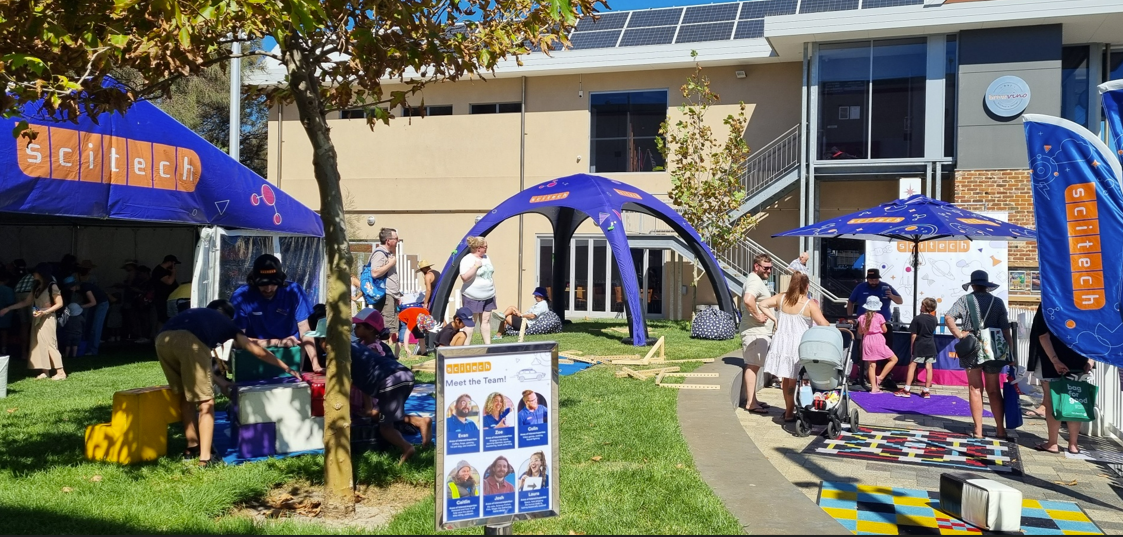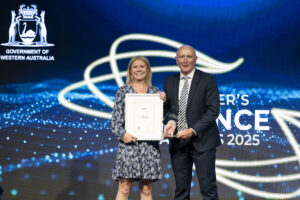If you’re sitting at the pub with your trivia team and a pint of beer, are you the type of person to just gulp down your drink? Or are you more likely to study the glass and try to measure its focal length?
If you’re in the latter group, it’s likely you have a high science capital – and you might not even know it.
So … what does that mean?
“I like to think of science capital in sort of the same way we think you are what you eat,” says Shanii Phillips.
Shanii is Audience Research Manager at Scitech, a not-for-profit science learning centre in Perth. “You are the sum of your science capital,” she says.
Science capital is a relatively new measure developed to understand people’s engagement with science, technology, engineering and maths (STEM) fields.
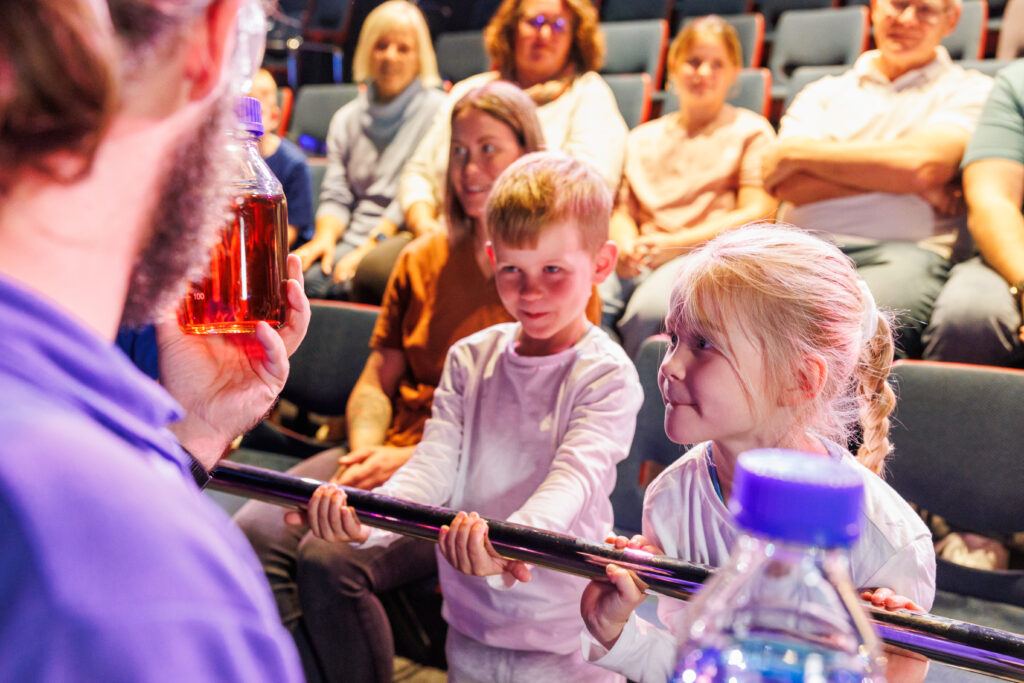
Credit: Scitech
Shanii notes it was devised by a group of researchers in the UK about a decade ago and helps provide a framework for thinking about how ‘sciencey’ people are.
Science capital is not a measure of intelligence or a judgement. Rather, it’s a way to understand how science fits into your everyday life, whether that’s while doing pub trivia, walking along the beach or visiting a science centre like Scitech.
“It’s not just how smart you are or how much science you know. It’s how you think, what you do and who you know. It’s linking the cultural and social,” says Shanii.
“I think it just beautifully encapsulates the point of everything we do in science communication.”
In a recent report, Shanii and researchers at the University of Western Australia used science capital to measure the social impact on the Western Australian community of the work done at Scitech.
The report had two aims.
It was an attempt to evaluate how Western Australians engage with Scitech and STEM through the lens of science capital. It also functioned as a pilot study to evaluate the usefulness of science capital as a tool for assessing the social impacts of science centres.
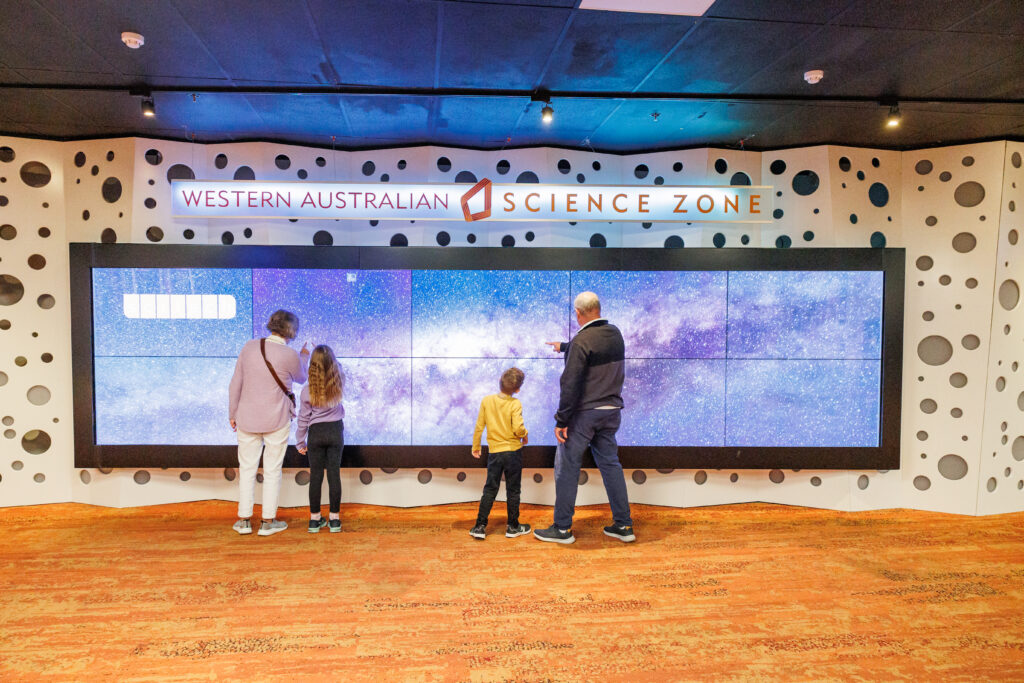
Credit: Scitech
PREACH IT
Alongside her collaborators Dr Heather Bray and Tarryn Basden at UWA, Shanii surveyed more than 650 people aged 18–85, asking questions such as “How often do you talk about science with other people?” and “Do you know anyone who works as a scientist or in a job that uses science?”
Interviews were also conducted with six respondents in the low and medium science capital categories and five who were deemed to have high science capital. The interviews allowed for more in-depth questioning of how respondents viewed their sciencey-ness.
By assessing the science capital of respondents and interviewees, Shanii and her colleagues were able to generate insights about how they engage with science and with Scitech.
“Science capital, for me, is another way of better understanding people and where they’re coming from,” she says.
For instance, one might assume those who attend a science centre like Scitech are all equipped with a high science capital and constantly engaged with STEM topics.

Credit: Scitech
Shanii’s research shows that isn’t necessarily the case – for those respondents with low science capital, going to Scitech is also valuable. They view it as a safe space.
“People who regularly engage with Scitech have a broad range of levels of science capital,” she says. “We’re not just preaching to the converted.”
This highlights the value of science centres to engage the community, regardless of how sciencey they might believe themselves to be.
CAPITAL CITY
The report concludes that science capital can be a useful framework for understanding the impact of science centres on the community.
Other research has used the framework of science capital to try and understand the aspirations of young people and how science capital might influence their career paths and goals.
Shanii sees science capital as a valuable tool for science communicators and educators – one that may also help science centres tailor experiences for their audiences.
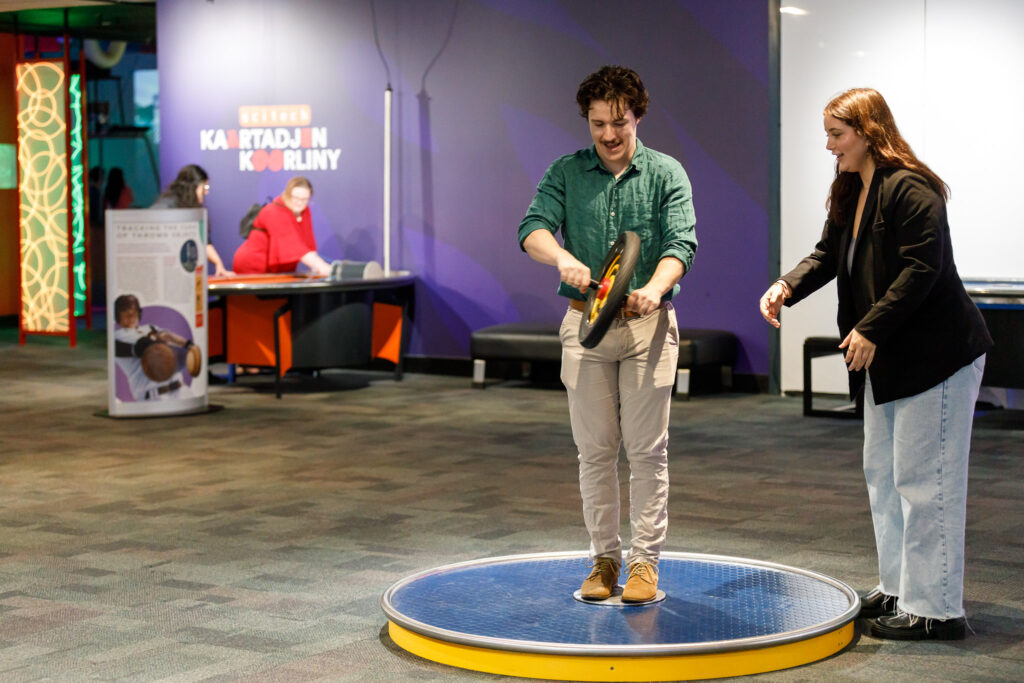
Credit: Deprimo Photography
And understanding a person’s science capital opens up possibilities to empower them to make informed decisions about the future.
“We know there are going to be some significant socioscientific issues in the 21st century that we need to address – and we need diversity of thinking,” Shanii says.
In practice, that means we need people with different levels of science capital as well as from different socioeconomic and migrant backgrounds and beyond.
It doesn’t matter whether you’re interested in the focal length of your glass of beer or not – addressing those challenges is buoyed by those differences.
“From the diversity of thinking, we will come up with the best solutions,” says Shanii.



